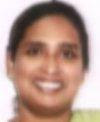Trauma for victims at GMC
Preetu Nair | TNN
Panaji: Grit and bear as you read this. At about 8 am, Dilip Kumar who was seriously injured when a portion of a retaining wall collapsed on an illegal structure at Porvorim, was brought to Goa Medical College from Asilo hospital, Mapusa, without his being administered any first aid treatment.
When he arrived at the entrance of the casualty ward at the GMC, he was bleeding profusely, yet there was no way he could be taken into the ward.
The reason: there were neither trolleys nor wheel chairs available. The casualty and trauma ward has six trolleys and wheel chairs, but four trolleys were occupied by dead bodies.
As there was no trolley or wheelchair in sight, the personnel from the fire department lifted Kumar and took him into the casualty ward.
This, somebody lifting patients, happens often at the GMC, and if there is no help, then patients just wait till a trolley or wheel chair is free.
Once Kumar was inside the ward, the medical officers sprang into action, gave him first aid and diagnosed his condition as critical suspecting liver contusion (bleeding). An x-ray was required and, Kumar’s relatives not being present in the hospital, it was another long wait, until one of the two servants on duty was free to wheel a trolley and take the patient to the adjacent x-ray room,.
The manner in which his friend, Ranjith Kanchana (20), was brought to the casualty was no different. As if that was not enough, the casualty ward is severely understaffed. Of the sanctioned strength of six, there were only three doctors, some of them juggling between the casualty and trauma ward.
On an average, one doctor has to attend to about 40 to 50 emergency patients every day. Doctors revealed that though six posts of casualty medical officers were sanctioned in 2006, the file is pending with ty ward. “It is a fact that there is shortage of doctors in the casualty. We have sent a proposal to the government to have six more, regular posts,” said Dr Jindal.
Stating that there is no shortage of trolleys or wheel chairs, Dr Jindal said that once in a while when a large number of patients come, there is a problem. “But we are in the process of buying some more trolleys and wheel chairs,’’ he added.
the finance department.
Besides, there is no adequate infrastructure to take care of emergencies. “But we have a shortage of beds (8), I V stands (6) and there is no defibrillator (an emergency machine used to give shock treatment to the patient as a last resort, if he is to die),” said a doctor.
GMC dean Dr V N Jindal admitted that there is shortage of doctors in the casuality
June 9, 2008, The Times of India, Goa edition
Subscribe to:
Post Comments (Atom)







No comments:
Post a Comment